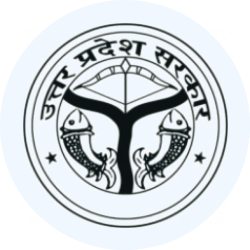Relevance of Federalism, Confederalism and Pluralism - Essay, UPSC MAINS | Course for UPPSC Preparation - UPPSC (UP) PDF Download
Relevance of Federalism, Confederalism and Pluralism
structure
(1) Opening — The World today is in the stage of paradigm shift.
(2) Body — The new and compelling relevance of federalism.
— Determinants of federalism.
— Meaning of federalism.
— Pluralism and federalism are the mood of the present and the wave of the future.
— Ethnic pluralism.
— Concepts of Federalism and Federation.
— Global triumph of federal idea.
— Thrust for co-operative federalism.
(3) Closing — Demand of human rights and frontier-free neighbour-hood.
— Free movement of people, free flow of goods, free flow of services and free flow of capital.
Federalists across the globe today share the perception that the world today is in the stage of paradigm shift, from a centralised, over-arching, sovereign state system (developed between the middle of the seventeenth to the middle of the twentieth century) to a pattern of diminished state sovereignty and authoritarianism, giving space to expanding inter-state linkages and various forms of decentralised federal and confederal arrangements.
Sovereign states have certainly not withered away (and there is no need or prospect of that either), but states are acquiring newer forms of increasing accommodation of civil society, of ethnic diversities and socio-cultural specificities.
Earlier, the dominant goals of states were concentration of authority, centralised direction, acquisition of self-sufficiency and promotion of socio-cultural homogeneity. In our contemporary epoch, consequent on the new shift of paradigm, states (big and small, industrially powerful and economically developing) are increasingly recognising the compulsion of global interdependence, of non-centralised authority within the state, and of necessary and desirable accommodation of heterogeneity and pluralism. In this shift of paradigm within the state system, federal principle and a whole range of federal arrangements are gaining greater recognition, as a means and method of peaceful coexistence of ethnic diversities and problem solving efforts in a plural society. And in inter-state relations within a geo-political region, varied formats of confederal pattern are being used for common purposes, mutual progress and prosperity.
Globally, federal ideas and federal systems are acquiring increasing relevance in our age and circumstances, at four levels—(i) in the UN system and its agencies; (ii) in the world bodies covering multinational interests and transactions; (iii) in the regional groupings for economic, scientific, technological, cultural and political cohesion; and (iv) in the domestic management of large states marked by socio-cultural diversities.
One might hypothesise that three determinants of federalism are crucial: (i) Federalism as a social the me recognises pluralism as the valid basis of collective peaceful coexistence, (ii) Federalism as a political principle seeks to stabilise a pattern of constitutional diffusion of power in order to reconcile the twin concerns of common/generalised ‘shared rule’ with specific/particularist ‘self-rule’; (iii) Federalism as an administrative arrangement coordinates the legitimate distribution of power and jurisdiction between the general/central/federal authority and the constituent units/states/provinces/landers/cantons, etc.
Federalism in essence is a convenant-based arrangement of regulated partnership in a plural society. Pluralism and federalism now appear as the two essential principles for organising heterogeneous societies into a viable pattern of political sharing of power, by reconciling the twin processes of political unification and social diversity, of commonality for certain purposes and specificities for others.
Federalism is a political structure of unity in diversity. It is a mosaic of integrating the polity and preserving civil society based on socio-cultural diversities. In a word, federalism builds and sustains the unity of polity, and simultaneously preserves and promotes the plurality of society.
Federalism seeks to promote in their respective jurisdiction, certain trends of centripetalism and other trends of centrifugalism, without making them contrary to each other, or placing them in confrontationist moulds. In a federation the equation between centralism and decentralism, between Union and States, is not and is not expected to be adversarial, or of the ‘either-or’ dichotomy, but of convergence in a pattern of cooperative distribution of jurisdiction and power. If there is no Union/Centre/general authority then there is no federation. Similarly, if there are no states/provinces/regions/cantons/federating units, etc., then also there is no federation. Federation then is a dialectical amalgam of ‘apparent’ opposites, which ‘realistically’ are not opposites but components of a complex whole. The essence of the federal principle is the perpetuation of both union and non-centralisation. Federalism is thus not merely a structural arrangement but also a process of functioning.
Pluralism and federalism are the mood of the present and the wave of the future, in humanity’s quest for an egalitarian, just and equipoised pattern of collective existence. They seek to reconcile two basic imperatives of liberty and order in a world of variety and diversity.
In India, under the visionary leadership of the national movement for independence, as symbolised by the personalities of leaders like Gandhi and Jawaharlal Nehru, we had long ago rejected both the ‘melting pot’ and the ‘salad bowl’ approach to reconciling and accommoda-ting diverse ethnic problems. On the other hand preference was given to the ‘bouquet’ approach, involving appreciation of diverse flowers, each with its own individuality yet ‘tied’ together as a single beautiful whole. We draw our metaphor from ‘flowers’ and the ‘garden’ and not from ‘kitchen’ and ‘cooking’.
Ethnic pluralities should be considered not as items to be ‘burnt’, ‘cooked’, ‘chewed’ and ‘digested’, but as ingredients of creation’s beauty in its varied human richness, demanding equal respect, admirations, legitimacy and dignity in an atmosphere of compassion, humanism and tolerance. Politically, legally and ethically it should be an essential part of federal culture to perceive the phenomena of plurality and federal-nation as a ‘bouquet’, and not as a ‘melting pot’ or a ‘salad bowl’.
It has been estimated that there are over 3000 ethnic or tribal groups in the world, conscious of their respective identities. Of the 195 sovereign states which are today members of the United Nations, over 160 are multi-ethnic in composition.
About forty per cent of the world’s population lives today within polities that are formally and constitutionally federal. About one-third of the human population lives in polities that utilise some form of federal arrangements in their po
litical systems. In other words, over seventy per cent of the human population are within the purview of one or the other pattern of federal dispensation.
In terms of political perception, the distinction between the twin concepts of Federalism and Federation is both profound and significant. This is becoming particularly evident in the contemporary epoch of world history. Precisely at a time when Federalism as the theory and ideology of governance is gaining universal approval and accolade, as the most preferred and relevant political arrangement in heterogeneous social situations for reconciling the necessary national territorial sovereignty of the state, with the desirable autonomies for ethnic, linguistic and religious diversities, Federation as the structure of power and statecraft, has been passing through the crisis of survival, stability and coherence in the last decade of the twentieth century.
Indeed the global triumph of the Federal idea and theory on the one hand, contrasted by the decline or tension in the practice of the federal systems on the other, constitutes a great irony of our times.
Of the 195 sovereign states in the world, only 25 are categorised as federal or quasi-federal states. (Till 1993 the number was 20, including the erstwhile Soviet Union, Yugoslavia, Czechoslovakia and Senegambia.)
These include six out of the ten most populous states in the world (namely, China—which is functionally quasi-federal—India, the USA, Brazil, Nigeria and Pakistan) and all the six states with large territories (namely, Canada, China, the USA, Brazil, Australia and India). These 16 states account for well-over one-third of the land-mass and about half the total population of the world.
Four out of the twenty recognised federations in the world got dissolved between 1989 and 1993. These were Senegambia (in 1989), East Germany (in 1990) the Soviet Union and Yugoslavia (in 1992), and Czechoslovakia (in 1993).
Several others are passing through a phase of grave tension, conflict and violence due to different set of problems—regional demands for greater autonomy, newer and assertive demands of minority segments, ethnic and linguistic conflicts, etc. These include Ethiopia, Nigeria and Tanzania (in Africa), Brazil, Mexico and Canada (in America), Germany, Switzerland, Russia and erstwhile Yugoslavia (in Europe), India, Pakistan and Malaysia (in Asia).
All federations in the last two centuries exhibited a strong propensity for centralisation of power and decision-making. Of course there were strong political and economic compulsion necessitating such a development.
The need for stability of the system, territorial security and political integration and the requirements of integrated market-system for faster growth were some of the factors that promoted this trend.
While this had strengthened the sovereignty of the federal state, it vitiated the federal-balance between the Centre and the federating units, and eroded the necessary autonomy of the States and ethnic groups and weakened the democratic ethos at the grassroots level. It transformed the federal state into a maximal state and sapped initiative at the regional and local levels of political life. It contributed to the emergence of authoritarian structures and arbitrary style of politics in many federations.
By the eighties of this century, however, the situation seems to have radically changed, leading to questioning of concentration of power in the federal centre. New democratic challenges have shaken the earlier certitude reposed in centralised authority everywhere. Rigid centripetal structures are crumbling.
A new worldwide demand for human rights, democratic culture, regional autonomies has resulted in the thrust for cooperative federalism, based on demand for ‘independence’ (rather than ‘autonomy’) of the federating units, as a necessary prelude for a better union, as is the position of militants in Kashmir in India, or more than that the innovative but controversial concept of ‘sovereignty-association’ articulated by Parti Quebecois for determining the status of Quebec in the Canadian federation. Indeed the format of the new federal union is envisaged as less rigid and more flexible to accommodate socio-cultural diversities, almost in the mould of a confederation.
In a new world of globalisation of economy, close-knit universal communication and permeation of electronic media system, the earlier and familiar concept of exclusive state sovereignty has become weak, partially inoperative, and even obsolete. Even a diehard conservative like Winston Churchill, attached to the sovereign independence of Britain, once spoke about the prospects of a European Union as attaining “a larger sovereignty.”
The rigid sovereign state system is giving way on the one hand to pooling of inter-state sovereignties in regional confederal arrangements for shared socio-economic gains, and on the other, to increasing assertion of ethnic entities, not necessarily conflicting with the larger sovereign state, but demanding greater space for autonomy and group-rights, within the domestic area of the State jurisdiction.
Therefore, at one level a factor of great relevance today is the increasing demand, all over the world, for human rights—individual human rights, group human rights, socio-cultural and regional human rights. At the other level, the world is moving towards building viable regional identities, which as in the case of Europe, exhibit a frontier-free neighbourhood upholding the four basic principles of free movement of people, free flow of goods, free flow of services and free flow of capital. Tariff walls have collapsed. Tax boundaries are no longer obstacles. This is indeed the new weltanschauung of our age and time.
|
113 videos|360 docs|105 tests
|
FAQs on Relevance of Federalism, Confederalism and Pluralism - Essay, UPSC MAINS - Course for UPPSC Preparation - UPPSC (UP)
| 1. What is the relevance of federalism in the context of UPSC mains exam? |  |
| 2. How does confederalism differ from federalism? |  |
| 3. What is the significance of pluralism in the context of UPSC mains exam? |  |
| 4. How does federalism contribute to the stability of a nation? |  |
| 5. How does pluralism enhance democratic governance in a country? |  |



























